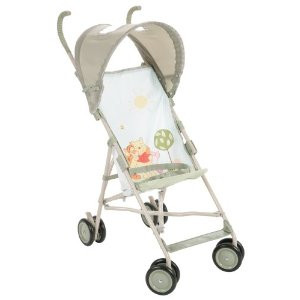
Competition on Buy On Google is heating up as more and more merchants get signed to the program. Especially now with the new commission-free sales model, there are some strong incentives to join up.
But if you’re going to do it, you should do it right. So, then, how can you improve your shot at winning the Buy Box among all the growing competition on this popular new channel?
It’s all about SEO. Forget Search Engine Marketing for the moment. You don’t need to buy Google Shopping Ads to have your listings surface in a product search on Buy on Google. You just have to be really smart about SEO.
And we’re going to tell you now how to outsmart your competition on Buy on Google with a winning SEO strategy.
1. Always think like your many different customers might.
People are diverse, and so is the way they use language when describing something they want or need. Not everyone will use the same terminology or words when making a query, whether it’s in typed or spoken form. (There are differences between these last two, even when the same person is doing the query, but that’s explained in more depth in another article.)
This is why you have to cover all bases in the way your products’ attributes are tagged for search. Think of all the different ways someone might describe this product, for instance:

The most common name for this type of stroller is an umbrella stroller, because of the shape of its handles. It’s also called a compact umbrella for the way it folds up. It’s preferred by many parents as a travel stroller they can take on planes, or as a city stroller for those who take the city bus or subway. It’s also a lightweight stroller, and an easy-fold stroller (compared to the behemoths you often struggle with). And if they’re British, you can substitute “pushchair” for “stroller” in all the above examples.
Learn to think like the users of your products. Unless you sell electronics items where the brand and model number will always be your best keywords/product tags, try to include the usage or benefit aspects of the product when coming up with keyword phrases to use in product titles, descriptions, bullet points and attribute tagging. Use modifier words like “lightweight,” “indoor,” “waterproof,” or “heavy duty.”
2. Don’t confuse rich product tagging with keyword stuffing.
You may have a lot of different tags you want to use, but that doesn’t mean you have to stuff them all into the product description. If you can do it gracefully–great. The natural-sounding product description for the stroller example above uses all the keywords but without sounding forced.
But if you’re not a wordsmith, don’t try to fake it. Use as many as you can before it starts to sound like Forrest Gump talking about shrimp. There are plenty of other opportunities to get those attribute tags into your listing. These include bullet points, and all the back-end tags you assign to the products when you sync your store’s listings to Google Shopping.
3. Optimize the listings for every product you’re planning to sell on Google.
You may know how to do it, but if you carry a large and diverse inventory you’re going to spend a lot of time composing and assigning all those tags in the format that Google requires. And you’ll have to do that from scratch every time, if you are selling through other channels. All product feeds must be synced into your Google Merchant Center to work with both Buy on Google and Google Shopping ads.
Google’s requirements for how you list attributes are currently different from, say, Amazon’s requirements (though within a couple of months, Google will reconcile its own tagging requirements to fit Amazon’s). And they’re also different from every other marketplace or channel you might be using to sell, so you’ll have to compose or reconfigure a different set of tags for all of those. Unfortunately, that requires exponentially more of your time.
4. This is how you can leave your competition on Buy on Google in the dust.
Your competitors are creating their own product attribute tags on Google’s format, and if they’re not thinking smartly the way their customers do, they’re inevitably going to miss some. It’s also taking them longer to get the job done because they’re juggling to manage all the other settings in their tech stack, like retargeting apps and repricing tools.
You, however, can sync your product listings to Google, and not have to come up with your own attribute tags. There’s a way to have it all done for you, automatically. Replete with every type of descriptive tag that might show up in a search query on Google, without you having to do the mental heavy lifting.
Users of Shoppingfeed’s product syndication service get automatic attribute matching for every type of product, real-time inventory syncing and order fulfillment and a built-in repricing tool that keeps your products dynamically listed at the best market price throughout the day.
AI-assisted technology that responds to the way buyers think and ask questions.
We’ve developed our own, proprietary Product Graphing technology that uses AI to assign product tags in every way a consumer might describe that product. It’s perfectly engineered for the growing trend in voice-assisted shopping where queries are often phrased as questions or full sentences.
Bottom line, then, you can outsmart your competition with an affordable tech solution from Shoppingfeed that frees up more of your time, eliminates errors and oversights, and keeps your orders flowing in real time.




